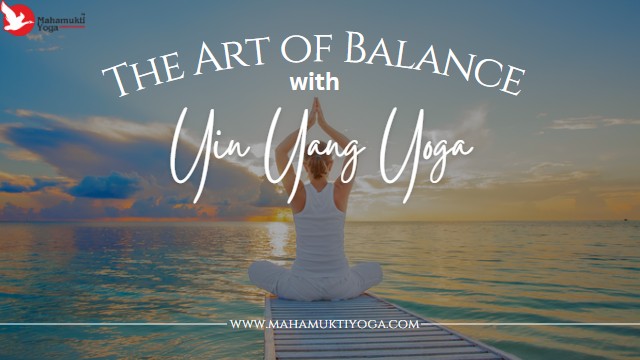In one practice, Yin Yang Yoga combines the benefits of more dynamic sequences and standing postures with those of passively holding yoga poses.
The Taoist concepts of Yin and Yang describe the two relative qualities that are present in everything. Internal, passive, cooling, and downward, yin is more prevalent. Yang is more dynamic, upward, and external.
Yin yoga, as these terms are used in yoga, is a slower practice in which poses are held passively for longer. The deep, dense (Yin) connective tissues and joints in the body are affected. Yang Yoga, on the other hand, is a more vigorous practice. Strength, endurance, and flexibility are all improved as a result of this’s impact on the Yang muscles and blood flow. Vinyasa Flow and other yin yoga styles emphasize rhythm and repetition.
Both Yang and Yin elements are necessary for a well-balanced yoga practice. You could try combining more active yoga with one or two Yin or Restorative yoga classes in our weekly schedule. Or, you could try working on both the Yin and Yang aspects in the same class.
Yin Yang Yoga has grown in popularity since its inception among yogis who want to find harmony between their mental, physical, and emotional energies. Yin Yang Yoga can be practiced in a variety of ways today, but they all emphasize the significance of achieving equilibrium between opposing forces for optimal health and well-being.
The practice of Yin Yang Yoga
Warm-up: Typically, the practice of yin yang yoga begins with a gentle warm-up to get the body ready for stillness and movement.
Yin Yoga: The second part of the exercise entails holding long, deep, passive stretches for a few minutes. The body’s joints, fascia, and connective tissues become less stiff and tense as a result of these poses.
Yang Yoga: Sun salutations, standing poses, and other flowing sequences make up the majority of the first part of the practice, which aims to build strength and heat.
Breathwork: Breathwork is emphasized throughout the practice to support a meditative state and help the body and mind connect.
Relaxation through meditation: The practice usually comes to an end with a guided meditation or relaxation, giving you time to process the benefits and let go of any tension that still exists.
Also Read : Do you want to become a 200 hour yoga teacher from Goa
Examples of Yin Yoga Poses
- Reverse Table Pose
- Child’s Pose
- Frog Pose
- Sukhasana (Easy Seated Pose)
- Parivrtta Janu Sirsasana
- Equal Angle Pose (Wide-Legged Straddle)
- Bound Angle Pose (Butterfly)
- Happy Baby Pose
- Savasana (Corpse Pose)
- Garland Pose (Yogi Squat)
You can also Join our 200 Hour Yoga Teacher Training course in Bali
Examples of Yang Yoga Poses
- Warrior 1
- Warrior 2
- Warrior 3
- Reverse Half-Moon Pose
- Four-Limbed Staff Pose
- Upward Dog
- Extended Side Angle Pose
- Triangle Pose
- Half Moon Pose
- Chair Pose
Also Read: Do you want to become a 300 hour yoga teacher from Goa
Benefits of Yin Yang Yoga

- Greater adaptability: Holding Yin poses for a long time can help make the muscles and joints more flexible, making it easier to move through Yang poses.
- Anxiety and stress reduction: Yin yoga’s slow, meditative pace can help alleviate stress and anxiety while also encouraging calm and relaxation.
- Enhanced balance: Physical and mental balance can be improved through the combination of Yin and Yang poses.
- Strength augmentation: Yang poses’ fluid movements have been shown to aid in muscle endurance and strength development.
- Circulation that is better: The practice of Yin-Yang yoga can help increase blood flow and oxygenation throughout the body, both of which are important for healthy circulation.
Follow Us On:
- Facebook : Click Here
- Instagram: Click Here
- Twitter: Click Here
- YouTube : Click Here





